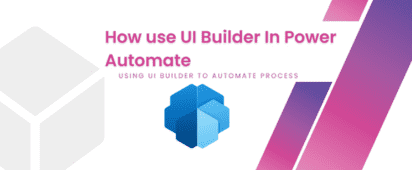Using effectively Microsoft Power Apps to automation process with UI Builder can save money? It depends if you really planning your process.
Firstly, AI Builder is a Power Apps feature that allows users to add AI capabilities to their applications without requiring extensive coding or AI expertise.
Secondly, companies’ processes need flexibility, quickness and precision to collect information.
In addition, now the costs to implement new technologies are not similar to 5 years ago.
Imagine you are one process that you need to register information invoice. Actually, you receive bills in other succursal and your operator has to tap all information in your ERP. To complete this process you need one computer and all structures to support a desk computer.
On the other hand, you can tell me: “I can receive this in the electronic document. But, it’s not one reality for all. I will make one article about this hypothesis and put a link here.
Let’s concentrate on our specific case.
Tools for our case: UI Builder into Power Apps
To clarify, one little explanation about this tool.
AI Builder is a versatile tool that can be used in a variety of applications. Here are some of the best use cases for AI Builder:
- Automating data entry: AI Builder can be used to automatically extract data from forms, invoices, and other documents, which can save time and reduce errors.
Customer service: AI Builder can be used to create chatbots that can answer customer questions and provide assistance 24/7. - Sales and marketing: AI Builder can be used to analyze customer data to identify patterns and make predictions about future buying behaviours, which can inform sales and marketing strategies.
- Quality control: AI Builder can be used to analyze images or videos to detect defects or anomalies, which can help improve quality control processes.
- Process automation: AI Builder can be used to automate repetitive tasks, such as data entry or invoice processing, freeing up employees to focus on more strategic tasks.
Overall, AI Builder is best used in scenarios where it can automate tasks, provide insights, or improve decision-making processes, allowing businesses to be more efficient and effective.
Case: Automate process to collect bill information.
Step 1: create file
1. Open Power Apps and create a new app or open an existing one.
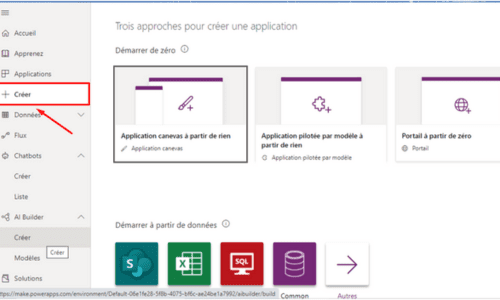
2. Click on the “AI Builder” option in the left-hand navigation menu.
3. Choose the type of AI model you want to create. There are several options available, including:
- Form processing: This allows you to extract information from forms, such as invoices or receipts.
- Object detection: This lets you identify and track objects in images or videos.
- Prediction: This helps you predict future outcomes based on historical data.
- Text classification: This allows you to categorize text based on pre-defined categories.
- Sentiment analysis: This helps you determine the sentiment (positive, negative, or neutral) of a piece of text.
5. Create a file name.
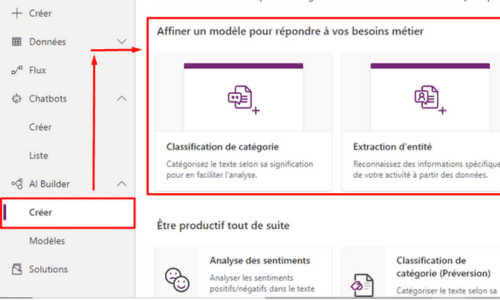
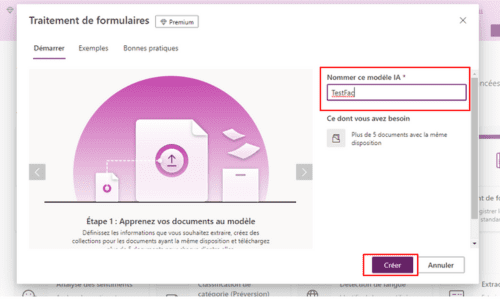
Step 2: Create variables fields
6. In this step we will create the fields that will receive the data we want to collect.
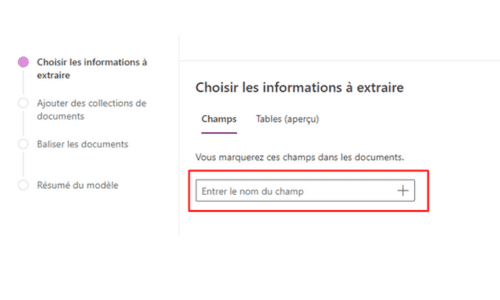
6. For my transactions create the following variables: credit card, previous balance, payments, transactions, other additions, interest, new balance, operations, due date, period and finally payment bar code.
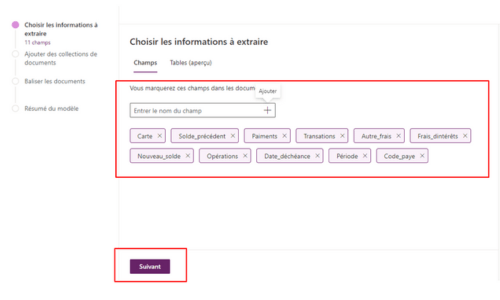
Step 3: Include invoices in the analysis template
7. Click on the new collection to pick up the training invoices in pdf.
8. separate different invoices to train the model. If an invoice has values identical to one of the others, the UI Builder training model will refuse to complete the step
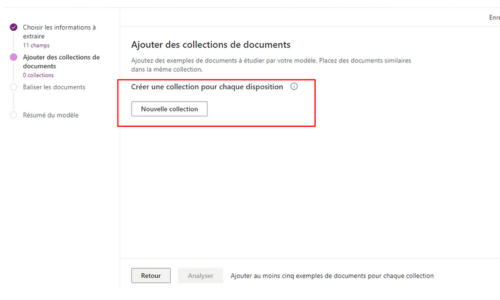
9. Click on the button to include documents.
10. Click on the button to include documents more once time.
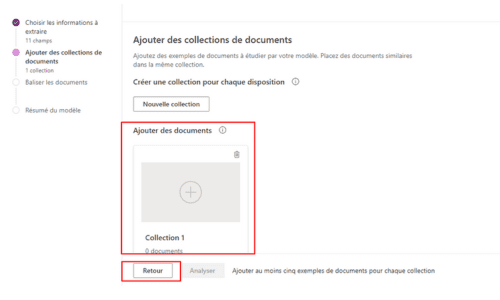
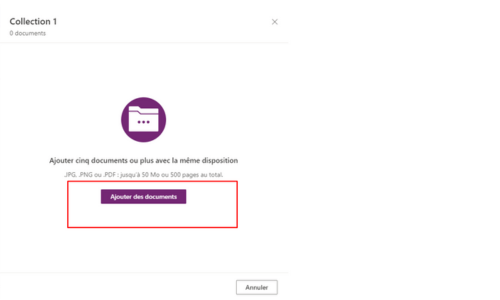
10. Click to select local storage images and Pickups images in your local storage
11. Until this moment, we can access a maximum of 20 invoices, but five is the minimum number in which the model can already be trained. let’s choose at least 5 invoices.
12. After, click em charger documents
13. check the status of the document loader and close the window
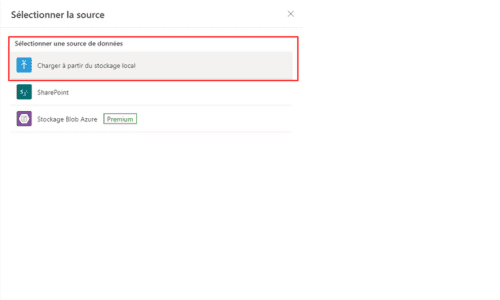
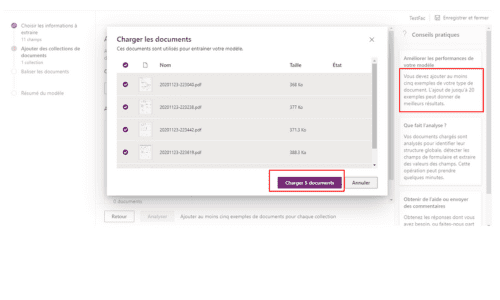
14. Finally, the model is perfect for training with our invoice
15. Click on analyse
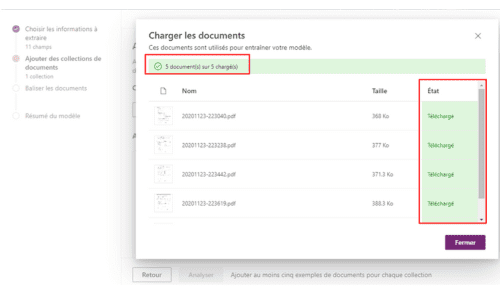
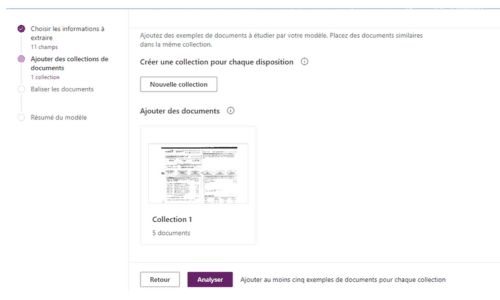
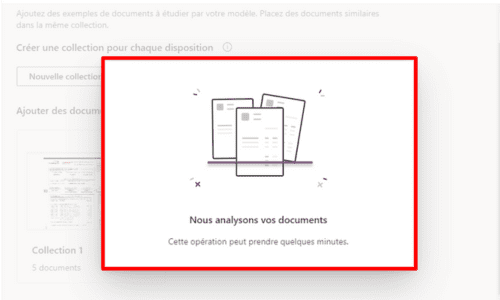
16. After completing the process click on Next Step
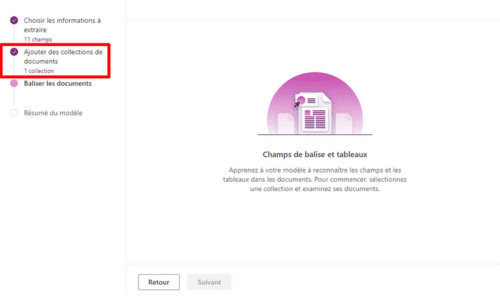
16. Automatically the template will select the fields according to the title of the variables. However, make sure it’s correct.
17. If the training model does not correctly select the value of your variable, click the three-dot icon to the right of the variable.
18. Fit the correct field from the value of the selected variable to the area.
19. Corrected for all variables and their respective values click Next.
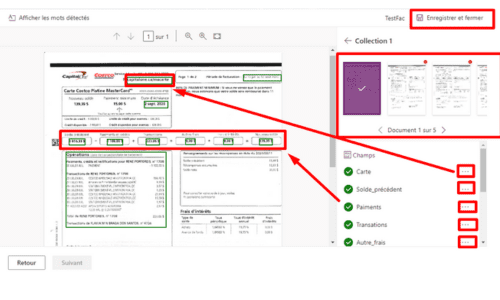
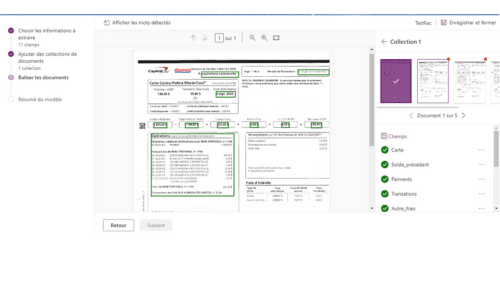
20. Automatically the template will select the fields according to the title of the variables. However, make sure it’s correct.
21. Perform the same steps for each document and make adjustments if necessary
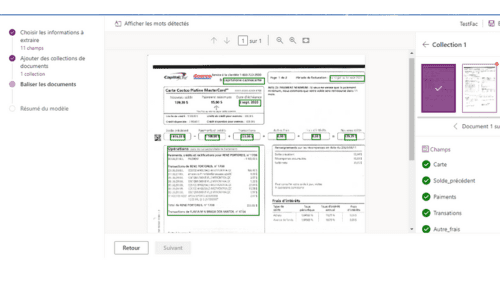
22. with all corrections made to the five selected documents. click next.
23. Click on the training model.
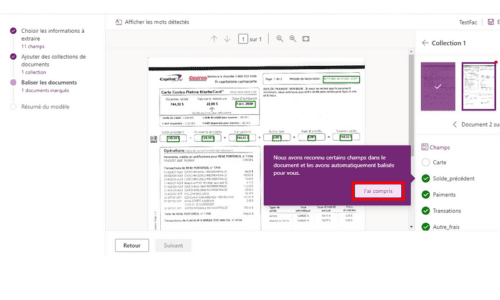
Step 4: Testing the UI Builder model
24. UI Builder then gives us a summary of the data collected with the invoice image.
25. Now we can click on Test the model
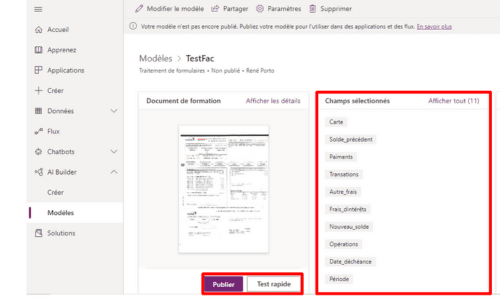
26. Depending on the equipment that you work for at the moment you can take a picture since the application was built for cell phones.
26. Anyway, if you’re doing it from a computer you can download other invoices to perform the test.
27. However, it selects invoices that did not participate in the model training.
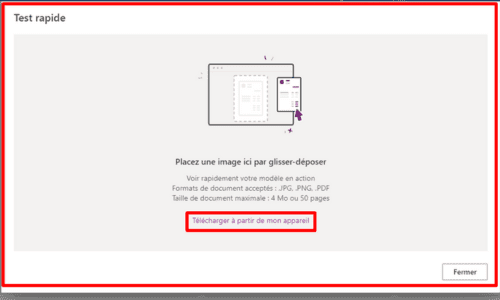
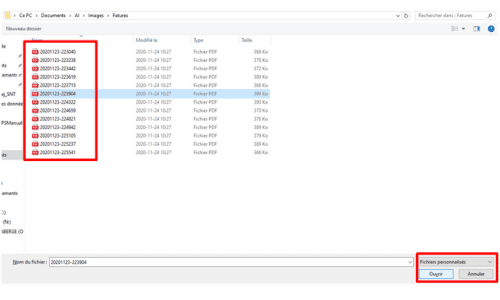
Step 4: Publish the UI builder model
28. Very easy, now just publish our UI Builder template.
29. Click on publish button.
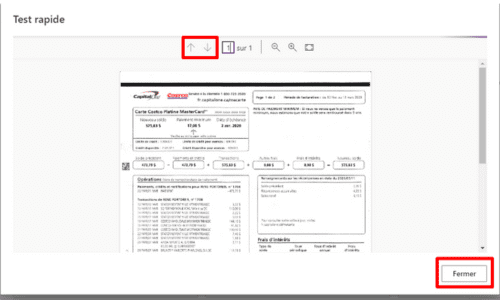
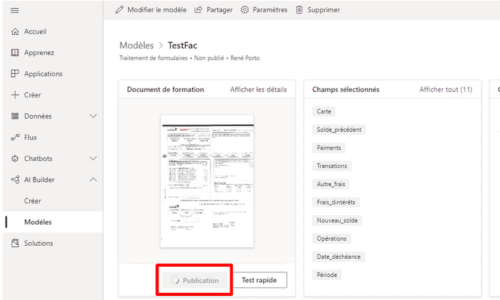
Power Apps application
Step 1: Create a Power Apps application
1. choose the option to create a custom application.
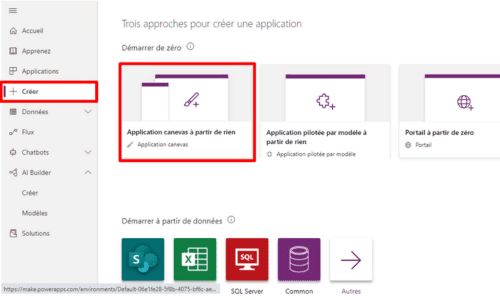
2. Name your application.
3. Select mobiel format.
4. Click on create button.
5. select in the menu bar, insert and after the option AI Builder.
6. Next, Form treatment.

7. Select the UI Builder template that you created. Notice that a form is created automatically to receive the UI Builder template.
8. Select in the menu bar, insert and after the option AI Builder.
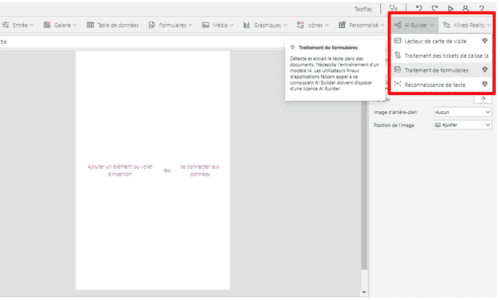
9. Name analyze button.
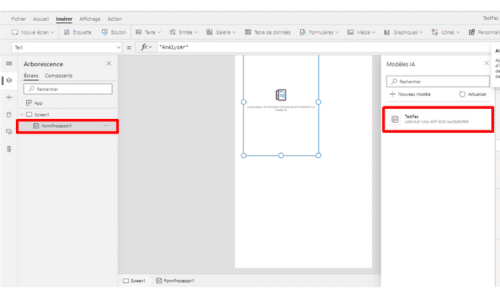
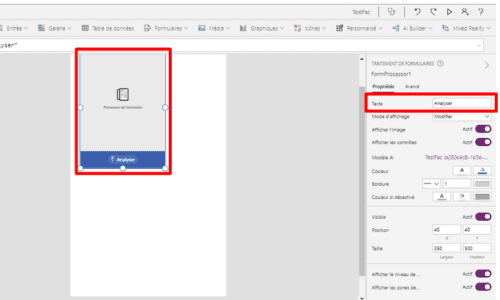
10. On your mobile make the test.
10. Bute in your computer select one invoices
11. Invoice processing
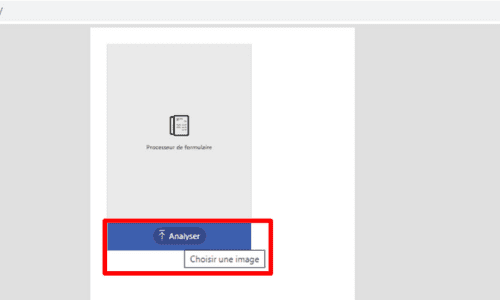
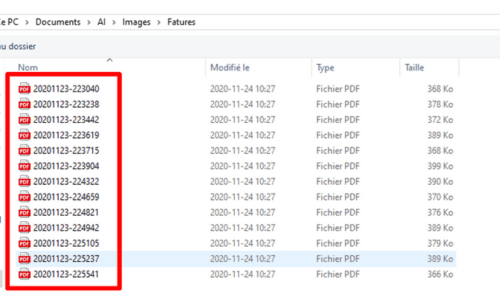
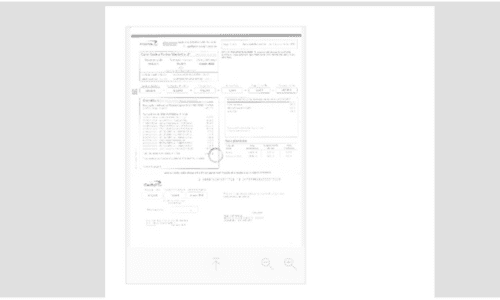
12. Automatically the model recognizes the invoice and captures the values.
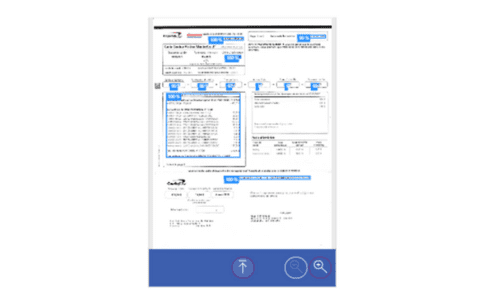
13. Now let’s create a table that will store this data.
14. Under Properties select in the checkbox the collection created to receive the data
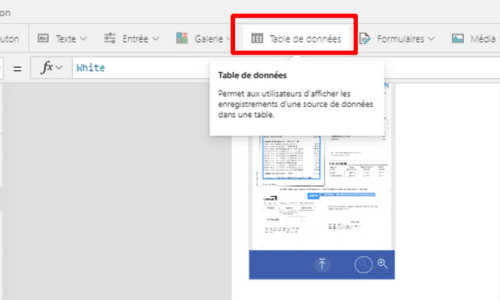
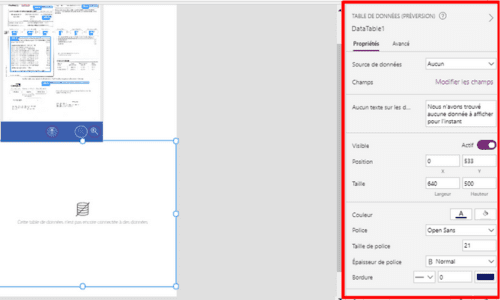
15. Let’s create one to load od data captured by UI Builder in the collection that will be created next.
16. In the function bar of the button, select the On Select method and include the code to create the named collection Formprocesso in this example. Name as you want.
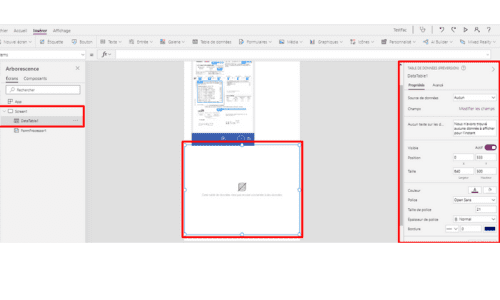
Code to create a collection:ClearCollect(FormProcesso;
{Cart:FormProcessor1.Fields.Carte;
ode_paye:FormProcessor1.Fields.Code_paye;
dateÉchéance:FormProcessor1.Fields.Date_déchéance;
Solde_precedent:FormProcessor1.Fields.Solde_précédent;
PayCredit:FormProcessor1.Fields.Paiments;
Transaction:FormProcessor1.Fields.Transations;
AutreFrais:FormProcessor1.Fields.Autre_frais;
FraisInterets:FormProcessor1.Fields.Frais_dintérêts;
NouveauSolde:FormProcessor1.Fields.Nouveau_solde})
16. In the function bar of the button, select the On Select method and include the code to create the named collection Formprocesso in this example. Name as you want.
17. For each field in the collection, select the corresponding correct field from the UI Builder template.
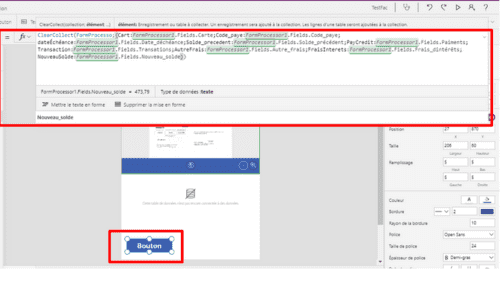
18. Now, select an invoice to collect the data for the collection you created.
19. You can check in the application parameters on the collection tab the cades collected by the model.
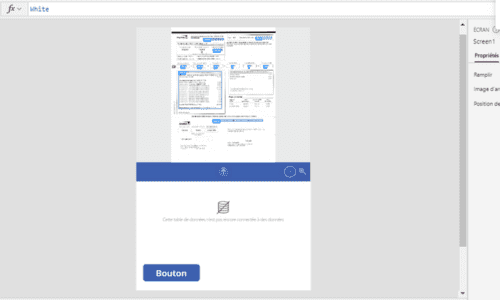
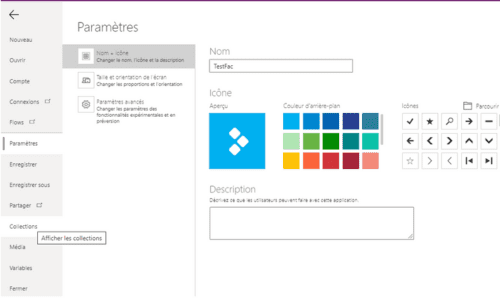
21. Enter a table and select the collection created to view the collected cases.
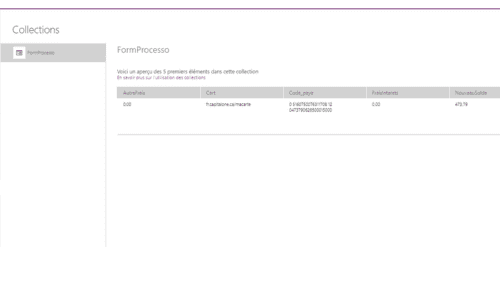
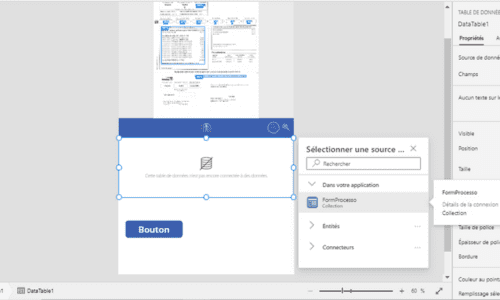
22. In the open menu to the right of the screen saddle in the property the option data feature.
23. Then select the fields that you want to view in the table.
24. Clarity we have a mobile model that does not give us so much space, however, we will choose the essentials.
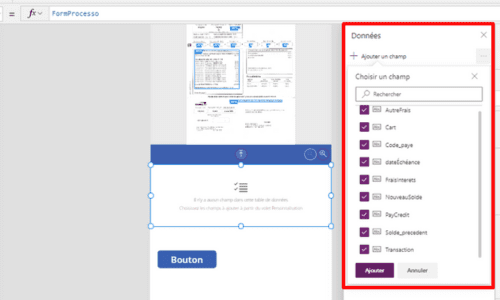
25. Beautiful, wonderful and very easy we already have the data inside the table to check them.
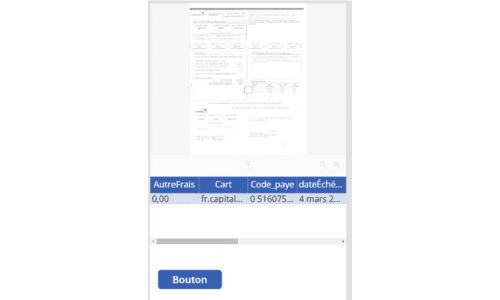
26. We can repeat this process several times up to the limit of the collection of 280 lines.

27. To end with elegance we will put a notification on the pot to inform us that the operation has taken place successfully. …
Finally finished, now you can optimize your process using artificial intelligence Microsoft UI Builder at a very low cost of development and technology in the palm of your hand.
Thank you for reading this article, write on our social networks, and sign up to receive our new letters.
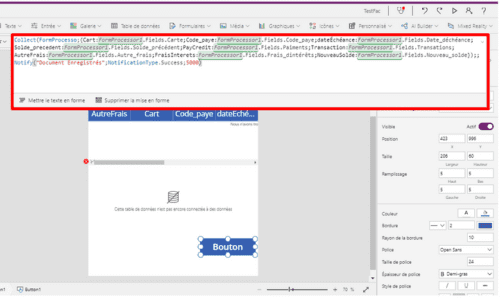
Where see more information:
– Power Automate, AI, Power Apps and other topics
– If you want to learn more about this topic click on this Microsoft link

